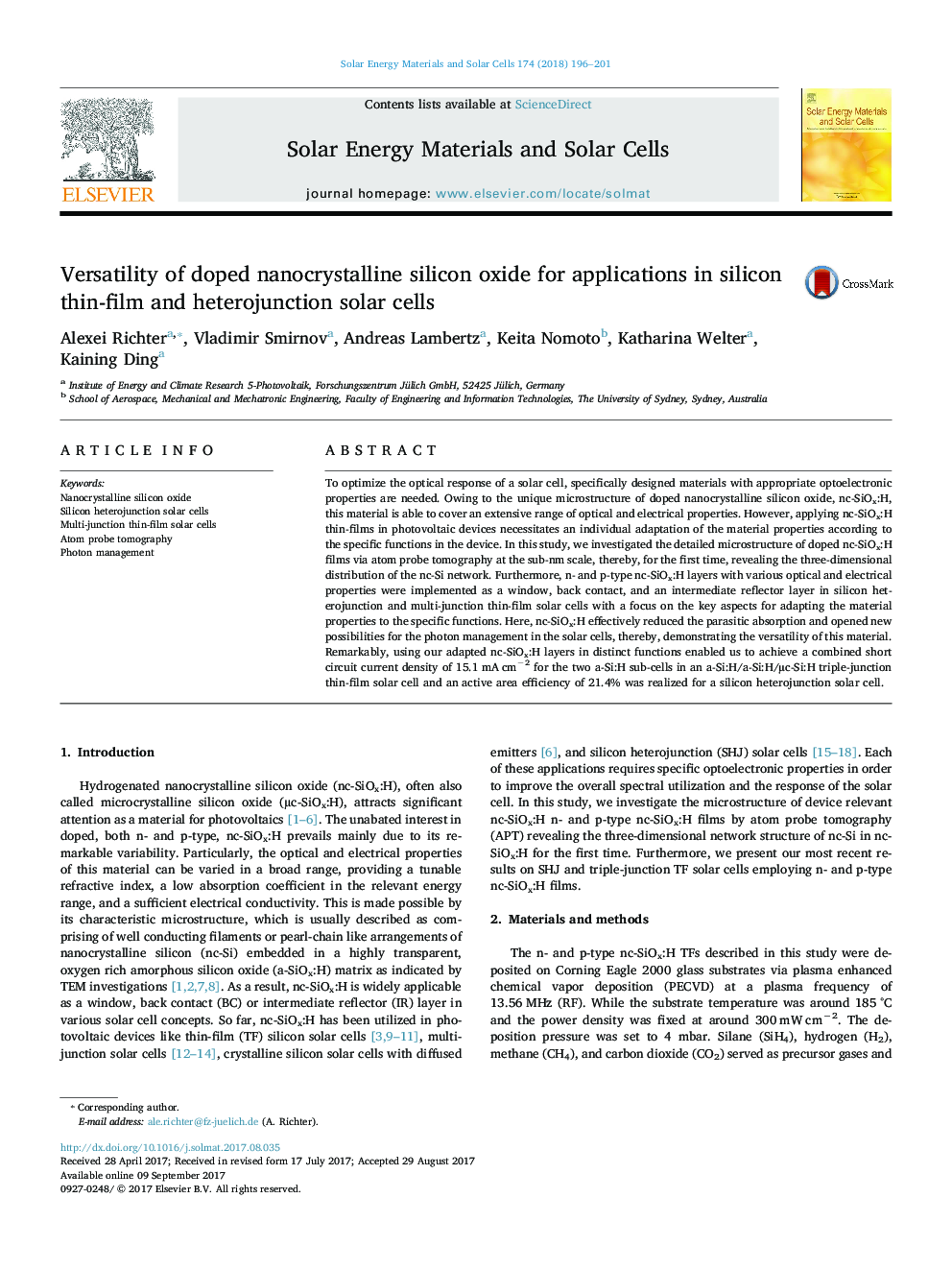| Article ID | Journal | Published Year | Pages | File Type |
|---|---|---|---|---|
| 6456652 | Solar Energy Materials and Solar Cells | 2018 | 6 Pages |
â¢Applications and requirements for nc-SiOx:H films in silicon solar cells.â¢Three-dimensional distribution of the nc-Si network in n- and p-type nc-SiOx:H.â¢Successful implementation in Si thin-film and Si heterojunction solar cells.
To optimize the optical response of a solar cell, specifically designed materials with appropriate optoelectronic properties are needed. Owing to the unique microstructure of doped nanocrystalline silicon oxide, nc-SiOx:H, this material is able to cover an extensive range of optical and electrical properties. However, applying nc-SiOx:H thin-films in photovoltaic devices necessitates an individual adaptation of the material properties according to the specific functions in the device. In this study, we investigated the detailed microstructure of doped nc-SiOx:H films via atom probe tomography at the sub-nm scale, thereby, for the first time, revealing the three-dimensional distribution of the nc-Si network. Furthermore, n- and p-type nc-SiOx:H layers with various optical and electrical properties were implemented as a window, back contact, and an intermediate reflector layer in silicon heterojunction and multi-junction thin-film solar cells with a focus on the key aspects for adapting the material properties to the specific functions. Here, nc-SiOx:H effectively reduced the parasitic absorption and opened new possibilities for the photon management in the solar cells, thereby, demonstrating the versatility of this material. Remarkably, using our adapted nc-SiOx:H layers in distinct functions enabled us to achieve a combined short circuit current density of 15.1 mA cmâ2 for the two a-Si:H sub-cells in an a-Si:H/a-Si:H/µc-Si:H triple-junction thin-film solar cell and an active area efficiency of 21.4% was realized for a silicon heterojunction solar cell.
